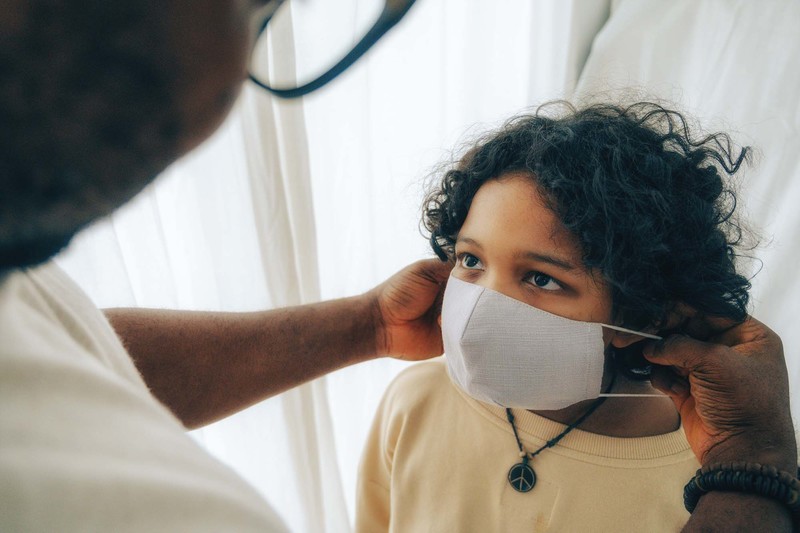The evolution of COVID-19: how long until it stops mutating?
27 September 2021 | Story Di Caelers. Photo Ketut Subiyanto, Pexels.
It’s the biggest question being asked across the globe: When will the COVID-19 virus stop mutating?
Not any time soon is the unequivocal answer from University of Cape Town (UCT) Associate Professor Darren Martin, who is among an ever-growing cohort of international geneticists, microbiologists and biochemists working tirelessly to track the rise – and hopefully the fall - of the virus responsible for the biggest global health emergency of modern times.
For the mutations that gave us the N501Y lineage variants known more commonly as Alpha, Beta and Gamma, Martin predicts that it’ll be another one or two years before they’ve played all their cards. For Delta, a “452 lineage, which has taken an altogether different evolutionary route, it’s likely to be much longer.”
An ever-evolving virus
Martin, based in the Division of Computational Biology in UCT’s Department of Integrative Biomedical Sciences, and a member of the Institute of Infectious Disease and Molecular Medicine (IDM) in the university’s Faculty of Health Sciences, explains that the presence of mutations that crop up independently in multiple different lineages indicates, put simply, that the virus is working to gain some level of “fitness advantage”. This may well not be game-changing, but their very existence points towards different lineages of the virus continuing to evolve towards improved transmissibility.
Martin is the lead author on a paper, still in preliminary review, entitled The Emergence and ongoing convergent evolution of the N501Y lineages . In it, he and his co-authors point out that the rapid evolution of three 501Y lineages in the last three months of 2020 was a consequence of adaptation to both rising population immunity and public interventions such as vaccines and social distancing.
For the mutations known as Alpha, Beta and Gamma, Martin predicts it’ll be another one or two years before they’ve played all their cards. For Delta… “it’s likely to be much longer.”
All, they wrote, had consequently “gained epidemiological and immunological properties that will likely complicate the control of COVID-19”. And that was before the arrival of the Delta variant.
Martin explains that their early work saw them create a so-called meta-signature, determined from the commonalities in the combinations of mutations that viruses in the 501Y lineages have been acquiring since October 2020.
“We found 35 specific mutations towards which they all seem to be evolving. By January this year, the closest one had 13 of the 35 mutations. By June, multiple different groups of viruses within the 501Y lineages had arisen that had 16 of the 35 mutations.
Other less prominent lineages are also evolving towards the 35 mutation signature: one of these contains viruses that have, independent of the Alpha, Beta and Gamma lineages, taken 10 steps towards that meta-signature over the past six months.
“But that doesn’t necessarily point to overwhelming levels of mutation. We’ve now analysed and created a meta-signature for Delta and other 452 lineages, and while they’re taking a different path towards success, we were surprised to find 12 mutation overlaps between the two meta-signatures,” he reveals.
Predicting increase in transmissibility
However, their study led them to anticipate that the culmination of the ongoing evolution, whatever the lineage, will indeed give rise to a succession of variants. Less concerning than the emergence of a super-variant carrying all 35 mutations, the paper stresses, is that any variants eventually summiting that peak may have “any combinations of increased transmissibility, altered virulence, and/or increased capacity to escape population immunity”.
At issue is that COVID-19 is human adaptive, and Martin says that being able to forecast the direction in which they’re evolving is crucial to determine “how far along the line we are with these viruses … how much more steam do they have before they run out of options?”
While researchers can determine that SARS-CoV-2 is still accumulating mutations that contribute to its fitness, he explains that it is impossible to predict a resultant percentage increase in transmissibility, for example.
“We know that, in amongst the hundreds of mutations being reported each day, we can identify those that are most likely to provide some sort of transmission advantage. But there is too much noise in those measurements for us to be able to work out how much each individual mutation contributes to increases in transmissibility.”
Genomic surveillance is helping scientists build a big-picture view of what is happening independently in multiple individual lineages.
It is easier to forecast the length of time it’ll take for particular viruses within individual lineages to start showing up with complete collections of all the individual mutations that contribute to fitness. Although for Delta, it’s much too early to tell. Analysis is ongoing, but Martin suggests this could well take five, or even 10 years.
While genomic surveillance of this nature won’t allow predictions for what will occur in the next six months, its value is in helping scientists build a big-picture view of what is happening independently in multiple individual lineages: “And from there we could narrow things down to a point where we can say what we think is likely to happen in the next six months,” stresses Martin, explaining that such evolutionary forecasting offers insight into where the virus is heading, but not necessarily its ultimate destination.
“Firstly, identifying predictability is important. But secondly, once we can refine that predictability we can make estimates, like meteorologists do when making educated guesses about what the weather will be a week from now. That gives us a base from which to plan more effectively, to ensure we keep up our guard and, ultimately, to begin producing vaccines that are based on future, rather than past variants.”
 This work is licensed under a Creative Commons Attribution-NoDerivatives 4.0 International License.
This work is licensed under a Creative Commons Attribution-NoDerivatives 4.0 International License.
Please view the republishing articles page for more information.










